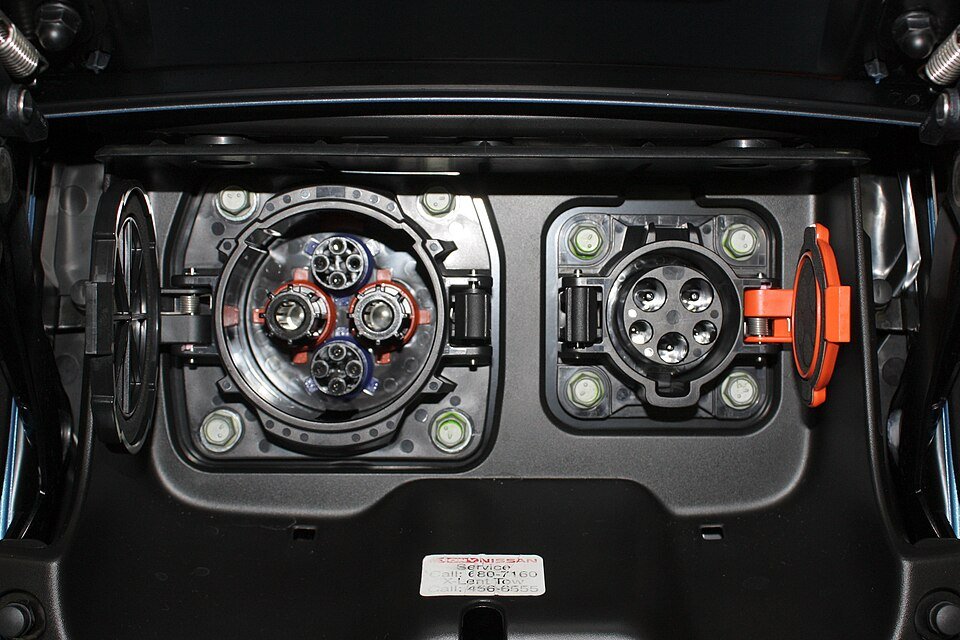The growth of electric vehicles (EVs) has reshaped the global transportation landscape, and at the heart of this transformation lies one critical element: charging infrastructure. Among the pioneering technologies in this space, CHAdeMO stands out as one of the first and most influential fast-charging standards for EVs.

Developed in Japan, CHAdeMO has become a cornerstone of the EV ecosystem, offering reliable and efficient DC fast charging to millions of drivers worldwide. This article explores the origins, benefits, challenges, and future of CHAdeMO, highlighting its ongoing relevance in an increasingly competitive charging market.
What Is CHAdeMO?
The name CHAdeMO comes from a clever play on words: it’s short for “CHArge de MOve” and also resembles the Japanese phrase “O cha demo ikaga desu ka” (which means “Let’s have a cup of tea while charging”). The idea behind the name is simple — fast enough to charge your car while you relax for a short break.
Originally introduced in 2010 by a consortium led by Tokyo Electric Power Company (TEPCO) along with automakers Nissan, Mitsubishi, Fuji Heavy Industries (Subaru), and Toyota, CHAdeMO was the world’s first widely adopted DC fast-charging protocol for electric vehicles.
It allows high-power direct current (DC) charging up to 62.5 kW (and in later versions, even higher), providing an 80% charge in about 30 minutes. The CHAdeMO Association, founded in 2010, oversees standardization and promotes its development globally.
You can read more about the CHAdeMO standard and its technical background on Wikipedia.
Key Benefits and Advantages of CHAdeMO

1. Proven Reliability and Safety
CHAdeMO has been in use for over a decade and is renowned for its safety and stability. It features robust communication protocols between the car and charger, ensuring secure power transfer and preventing overheating or overload.
2. Wide Compatibility
Many early and mid-generation EVs, especially from Japanese manufacturers, use CHAdeMO. This includes models like the Nissan Leaf, Mitsubishi Outlander PHEV, and Kia Soul EV. Because of this, CHAdeMO chargers are still a vital part of the charging network in Asia, Europe, and North America.
3. Bi-Directional Charging Capabilities
One of CHAdeMO’s most unique features is Vehicle-to-Grid (V2G) capability. This allows energy to flow both ways — not just from the charger to the car, but also from the car back to the grid. It enables applications like powering homes during outages or selling excess electricity back to the grid.
4. Global Infrastructure Support
Thousands of CHAdeMO stations operate globally, with a particularly strong presence in Japan and Europe. Its early adoption provided a massive head start in building public charging infrastructure for EVs.
5. Backward Compatibility
New versions of CHAdeMO maintain compatibility with older vehicles, which protects long-term investment for both EV owners and charging network operators.
Challenges and Limitations of CHAdeMO

1. Growing Competition
While CHAdeMO was the first major DC fast-charging standard, it now faces intense competition from newer technologies such as CCS (Combined Charging System) and Tesla’s Supercharger network. CCS, in particular, has become the preferred standard in Europe and North America.
2. Limited Adoption by Western Automakers
Most Western car manufacturers have shifted toward CCS, leaving CHAdeMO primarily used by Japanese and some Korean automakers. This shift has gradually reduced CHAdeMO’s market share outside of Asia.
3. Slower Charging Speeds (Compared to Newer Standards)
While CHAdeMO 1.0 supports up to 62.5 kW, CCS and Tesla chargers can now exceed 250 kW or more. Although CHAdeMO 2.0 and the next-gen ChaoJi aim to fix this, older vehicles and chargers remain slower by comparison.
4. Bulky Connectors
CHAdeMO’s large connector design, though robust, can be cumbersome compared to sleeker CCS plugs. This can affect user experience and convenience, especially at compact urban charging points.
Real-World Examples and Applications

Japan: The Stronghold of CHAdeMO
Japan remains CHAdeMO’s home base, with thousands of charging points across the country. Nearly every public charging station supports CHAdeMO, reflecting its role in Japan’s EV policy and infrastructure planning.
Europe: Widespread Yet Gradually Declining
In Europe, CHAdeMO chargers were once widespread thanks to early adoption by Nissan and Mitsubishi. However, newer installations increasingly prioritize CCS compatibility. Still, older Nissan Leafs and Mitsubishi Outlanders ensure CHAdeMO ports remain active in many regions.
North America: Transition in Progress
In the United States and Canada, CHAdeMO infrastructure exists primarily along highways and urban centers. Networks like EVgo and ChargePoint continue to support CHAdeMO alongside CCS, ensuring older EVs remain serviceable.
You can explore more about the global expansion of electric vehicle charging on the Electric Vehicle Wikipedia page.
Future Trends and Predictions

1. Transition to ChaoJi: The Next Evolution
CHAdeMO’s next generation, called ChaoJi, is a collaborative project between the CHAdeMO Association and China’s GB/T standard developers. It supports up to 900 kW of power with a smaller, lighter connector — a massive leap forward in fast charging technology.
2. Continued Role in V2G Technology
CHAdeMO’s early leadership in Vehicle-to-Grid (V2G) integration ensures it remains relevant for grid-balancing and smart-energy applications. Future smart homes and cities may rely on CHAdeMO-compatible systems to manage power dynamically.
3. Sustained Use in Developing Markets
Even as CCS and Tesla expand globally, CHAdeMO will likely maintain a foothold in developing regions where early-generation EVs remain common. Affordable installation and proven reliability make it a practical choice.
4. Possible Integration with Universal Standards
As global collaboration increases, future charging networks might support multi-standard connectors, ensuring CHAdeMO compatibility alongside CCS and others, enhancing convenience for all EV owners.
FAQ
1. What does CHAdeMO stand for?
CHAdeMO stands for CHArge de MOve and also alludes to the Japanese phrase “Let’s have a cup of tea,” symbolizing its fast-charging convenience.
2. Which cars use CHAdeMO?
Common vehicles include the Nissan Leaf, Mitsubishi Outlander PHEV, Kia Soul EV, and several older models from Japanese automakers.
3. Is CHAdeMO still relevant today?
Yes. Although CCS and Tesla dominate newer markets, CHAdeMO remains widely used, particularly in Japan and Europe, and continues evolving through the ChaoJi project.
4. How fast is CHAdeMO charging?
CHAdeMO 1.0 offers up to 62.5 kW, while CHAdeMO 2.0 and future ChaoJi versions can reach 400–900 kW, significantly improving charge times.
5. Can CHAdeMO support vehicle-to-grid (V2G)?
Absolutely. CHAdeMO is the first standard to enable V2G charging, allowing bidirectional energy flow between vehicles and the grid.
Conclusion
The story of CHAdeMO is one of innovation, collaboration, and evolution. As one of the earliest and most reliable DC fast-charging standards, it played a crucial role in making electric vehicles practical and convenient for millions of users worldwide.
While newer technologies like CCS and ChaoJi are redefining the next era of EV charging, CHAdeMO remains a symbol of reliability and a bridge toward a fully electrified future. Whether through its role in vehicle-to-grid integration, developing market infrastructure, or next-generation technology partnerships, CHAdeMO’s legacy continues to shape how we charge, drive, and think about sustainable mobility.
–For more insights into the future of electric mobility, stay tuned to voltdrivehub— your source for EV innovation, charging solutions, and sustainable transport trends.



